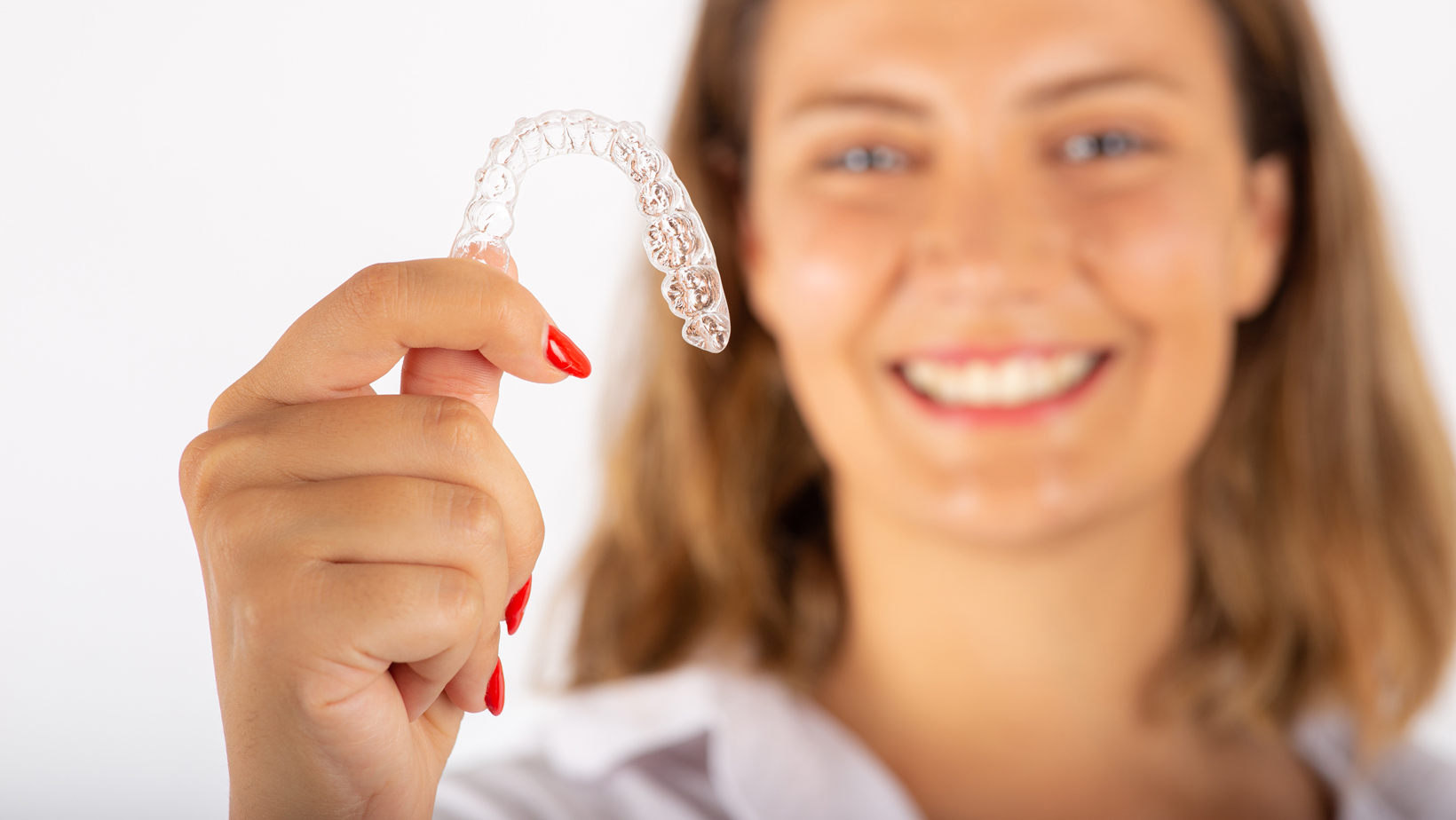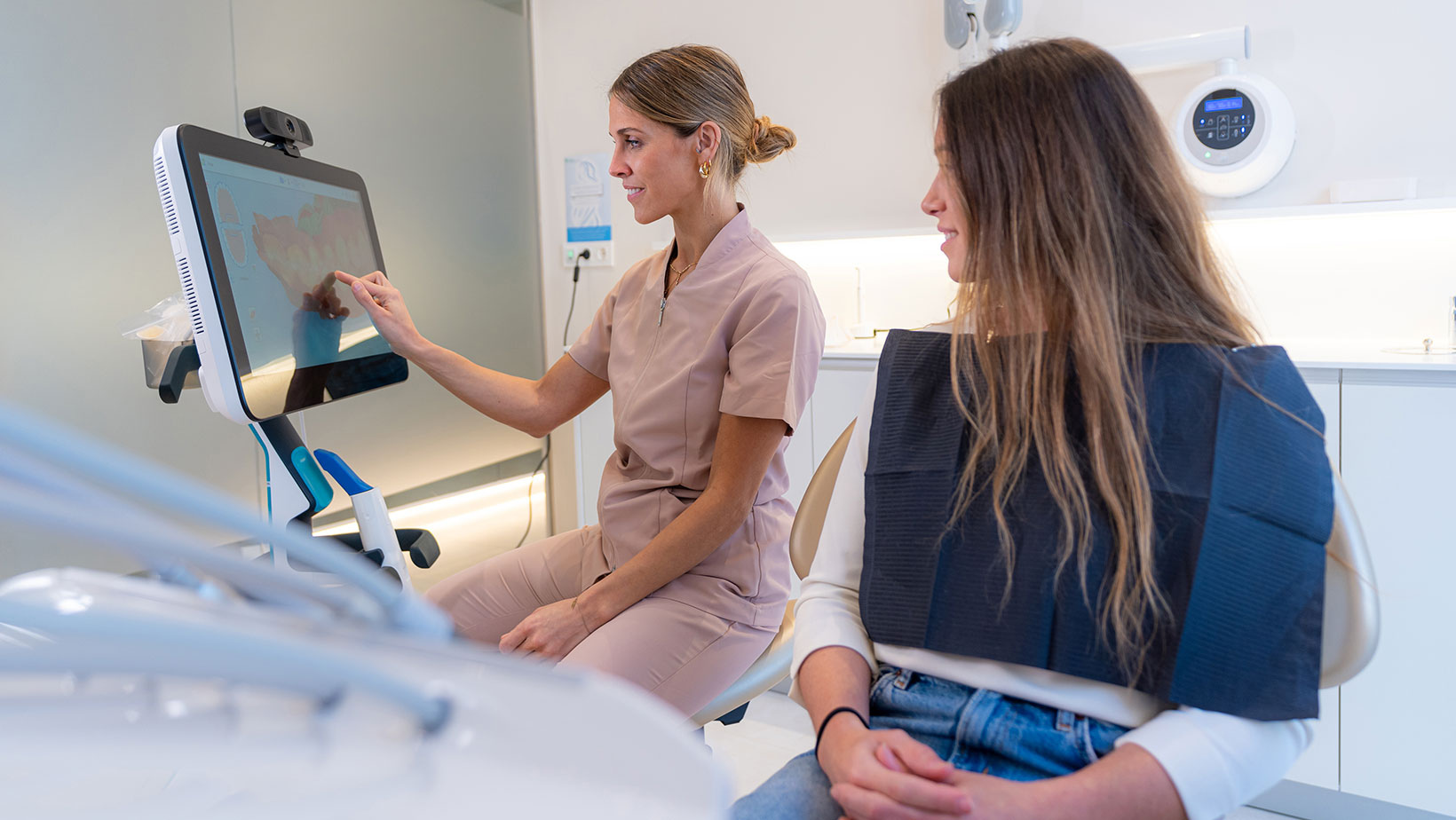
There is no reason to give up being active while undergoing Invisalign treatment. In fact, playing sports with Invisalign provides even more freedom than braces, because there’s not as much concern about metal wires or brackets cutting the mouth upon impact. However, we have some advice to ensure you or your child gets the most out of Invisalign treatment while enjoying their favorite activities.
1. Wear a Mouthguard, But Never Replace a Mouthguard with Invisalign
According to Sports Health Journal, athletes who wear mouthguards are almost two times less likely to experience a dental injury, such as a chipped or broken tooth, or soft tissue injury to the cheeks or gums. While Invisalign trays fit closely against the teeth like a mouthguard, they do not provide the same cushioning protection against impact that a mouthguard does. In fact, Invisalign trays can easily break or come loose during a blow to the face, injuring your mouth and hindering orthodontic treatment. Therefore, you should never replace a mouthguard with Invisalign or vice versa. Since most contact sports like hockey, football, and soccer only take an hour or two, it’s okay to remove aligners and replace them with a mouthguard during competitions or practices. Just remember that Invisalign trays must be worn for 20-22 hours each day, so they need to be put back in as soon as a game or practice is over.
2. Teeth Are Constantly Moving During Invisalign Treatment, So Mouthguards Should Be Adjustable
Invisalign trays work by pushing the teeth into alignment with controlled pressure. Because the trays work so effectively, there will be noticeable changes week after week. This means that a mouthguard worn at the beginning of Invisalign treatment will fit much differently a month or two later. One option is “boil and bite” mouthguards. These are made of thermally-reactive plastic, which becomes soft after boiling them in water. Biting down on them while they are soft creates a mold of your teeth. This process can be repeated every month or so to reshape the mouthguard so it fits properly for protection.
3. You Can Keep Aligners In While Playing Non-Contact Sports
There is always some risk of injury to the mouth while playing sports, but less intense activities like tennis, gymnastics, golf, running, and cycling are less likely to cause dental damage than some contact sports. Patients should always use their best judgment, but it’s typically okay to wear aligners during these sports.
4. Hydration is Important for Athletes, But Only Drink Water with Invisalign
It’s perfectly fine to drink water while wearing aligners, but Gatorade and other sports drinks have high levels of sugar. This can make its way under the trays and get trapped against the teeth, increasing the risk of cavities. Some liquids may also stain or damage the aligners. If you need to quench your thirst with something other than water, just make sure to remove the trays first and, if possible, brush (or at least rinse) your teeth before putting the trays back in.
5. If Aligners Are Damaged While Playing Sports with Invisalign, Contact Your Orthodontist Right Away
Despite your best efforts to protect your or your child’s oral health, accidents do happen while playing sports. A tumble off a bicycle or a fall off the balance beam can break a tooth or damage Invisalign trays. Of course, the first priority is to see a dentist to assess and treat the injury. After that, it’s important to seek advice on how to keep your teeth-straightening plan on track. Your orthodontist will be able to tell you if a replacement aligner is needed or if it’s okay to move on to the next set.

Have More Questions About Orthodontics and Sports? Talk to a Dentist Near You
Whether you’re an active adult who has just started Invisalign treatment or the parent of a teen athlete trying to decide between braces and Invisalign, you’re likely trying to understand a whole new ball game. To clear up your concerns, ask your dentist or orthodontist for advice. They can make recommendations for mouthguards that will work best with your Invisalign treatment plan or help you decide if braces are a better option. If you’re not currently working with a dental provider, we can help. Use our online tool to find one near you.


